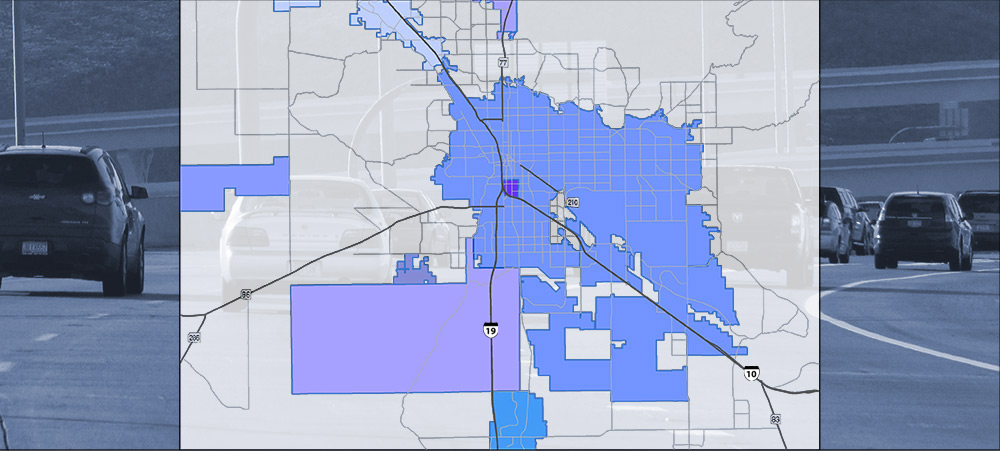
The greater Tucson region is home to more than 1 million people and, according to the U.S. Census Bureau, more than 90% of households in Pima County have access to at least one vehicle.
Those vehicles travel thousands of miles through major interstates (I-10 and I-19), state routes and arterial streets that traverse cities, towns and unincorporated areas to lead to residential neighborhoods of public and private streets. Each of these roads is maintained by their primary jurisdiction: Pima County, Tucson, South Tucson, Sahuarita, Oro Valley and Marana, and the Arizona Department of Transportation. The metro area also includes tribal land with roads owned and maintained by the Pascua Yaqui Tribe and Tohono O’odham Nation.
While passenger vehicles are the ubiquitous form of transportation in the region, they are just the beginning of the options available.
Bus, streetcar and specialty transit services are largely run by Sun Tran, the greater Tucson region’s mass transit company, with the main sources of transit funding from the City of Tucson, Pima County and the Regional Transportation Authority.
Other transportation options can be accessed via ridesharing, daily bikeshare and hourly scooter rentals to round out the choices in an otherwise car-dependent region. In recent years, app-based ride hailing services such as Uber and Lyft are prevalent, joining traditional cab companies in providing short-notice rides.
Pima Association of Governments conducts transportation planning for the greater Tucson region as a federally designated metropolitan planning organization and considers all forms of transportation. PAG prepares a long-range transportation plan to secure federal and state dollars for regional transportation improvements. As part of its planning requirements, PAG measures traffic congestion and uses congestion management tools to identify issues and develop strategies to solve them. PAG also develops travel demand strategies, including through its Travel Reduction Program, which encourages large employers to promote the use of alternative modes of travel among their employees. These strategies reduce traffic congestion and, in turn, support clean air.
New residents often observe and periodically question why there is no cross-town freeway. The idea was declined by voters several times in the 1980s and 1990s due to the cost and land-use issues involved in adding a cross-town freeway after the city was already densely developed. As a result, traffic in the urban core is heavier on key corridors compared to major cities similar in size to Tucson. This creates a different planning emphasis to address the unique transportation needs in the region.
Other transportation offerings include small airports scattered throughout the region. Major airlines use Tucson International Airport on the south side of the metro area. The Tucson Airport Authority also operates the smaller aircraft site called Ryan Airfield on the southwest side. On the north side, Marana Regional Airport is part of the Town of Marana, and the Pinal County-run Pinal Air Park sits near the border of northern Pima County and southern Pinal County.
As transportation technology continues to evolve, electric vehicles are beginning to infiltrate as a daily, though still not frequent, form of passenger travel. The county fleet and city buses have been transitioning to electric power, and the Tucson City Council now requires all new residential construction to include electric vehicle charging infrastructure.
Railroad service has been available in the greater Tucson region since the 1880s. Today, the Union Pacific Railroad tracks bisect the unincorporated area of Vail and generally run parallel to I-10 through southern Pima County and then northward toward Phoenix. The route provides largely rail freight transportation services, though Amtrak offers passenger rail options through the southern part of the country, reaching from Tucson west to Los Angeles and east to Louisiana more than once a week.

